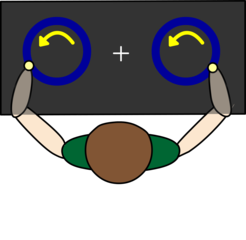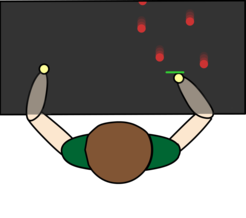Stroke and upper limb coordination
Neural correlates of bilateral coordination

Coordinating both limbs in a meaningful way is essential for most of our daily tasks. Previous studies have shown performance differences between two fundamental bimanual movement patterns: moving the upper limbs in a mirror-symmetrical (MS) pattern was found to be less demanding than in a non-mirror-symmetrical (NMS) pattern. Understanding the behavioral and neuronal changes of different bilateral coordination patterns might help to develop training interventions for patients with neurological deficits. In the current study, we developed a circle drawing task (with different bilateral movement patterns) in the KINARM exoskeleton system, which allowed us to simultaneously investigate movement kinematics traits and ongoing neural activity using EEG.
Paretic arm training after stroke in an augmented reality environment

In this project, we perform a 4-week-training of the paretic proximal movements in an augmented reality environment, and investigate adaptations both on a kinematic and on a neural level. We further ask, how unilateral training might transfer to more complex bilateral motor tasks. Both EEG and pre-post functional MRI are being used to delineate potential neural changes that are associated with behavioral changes.

